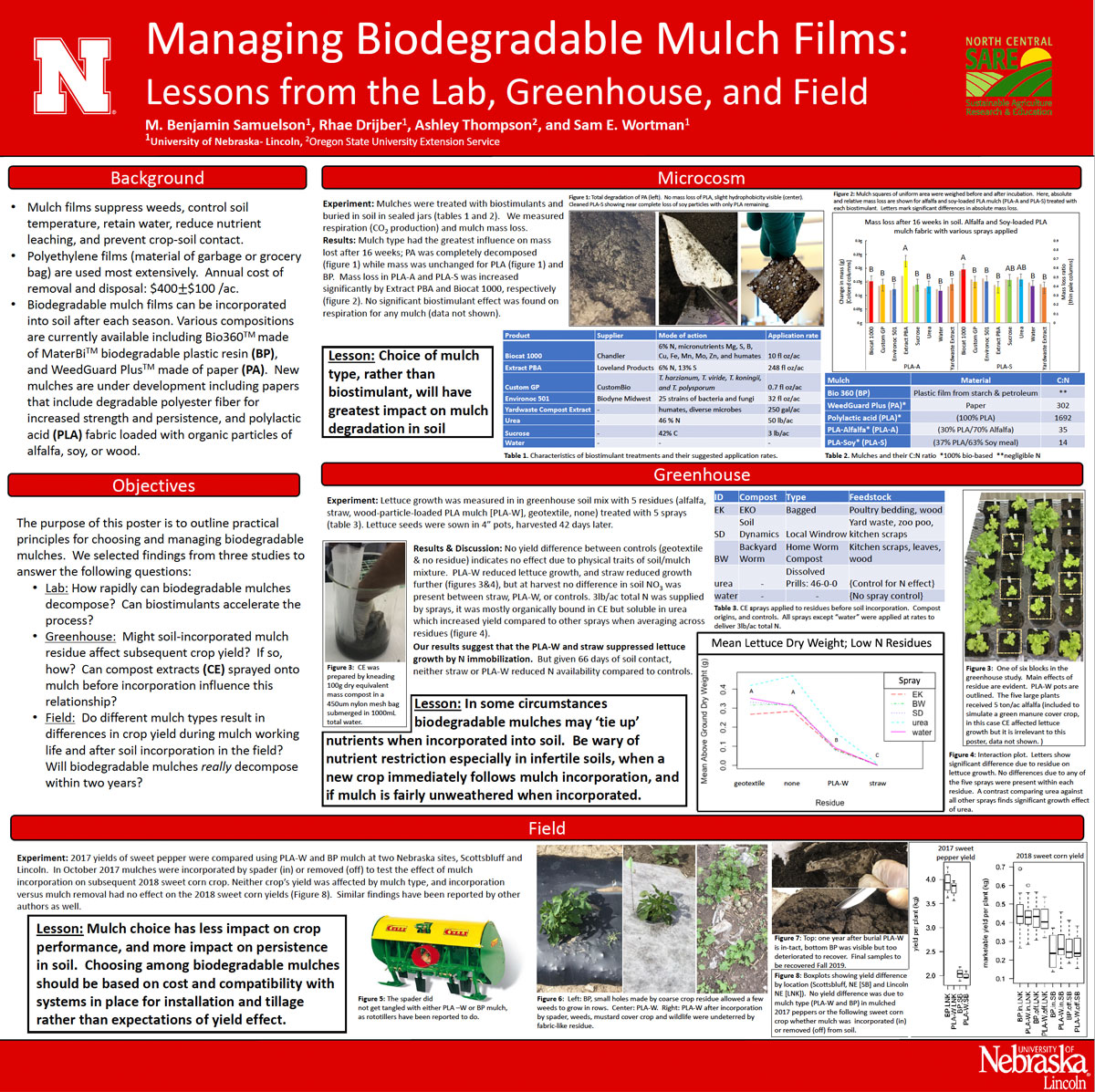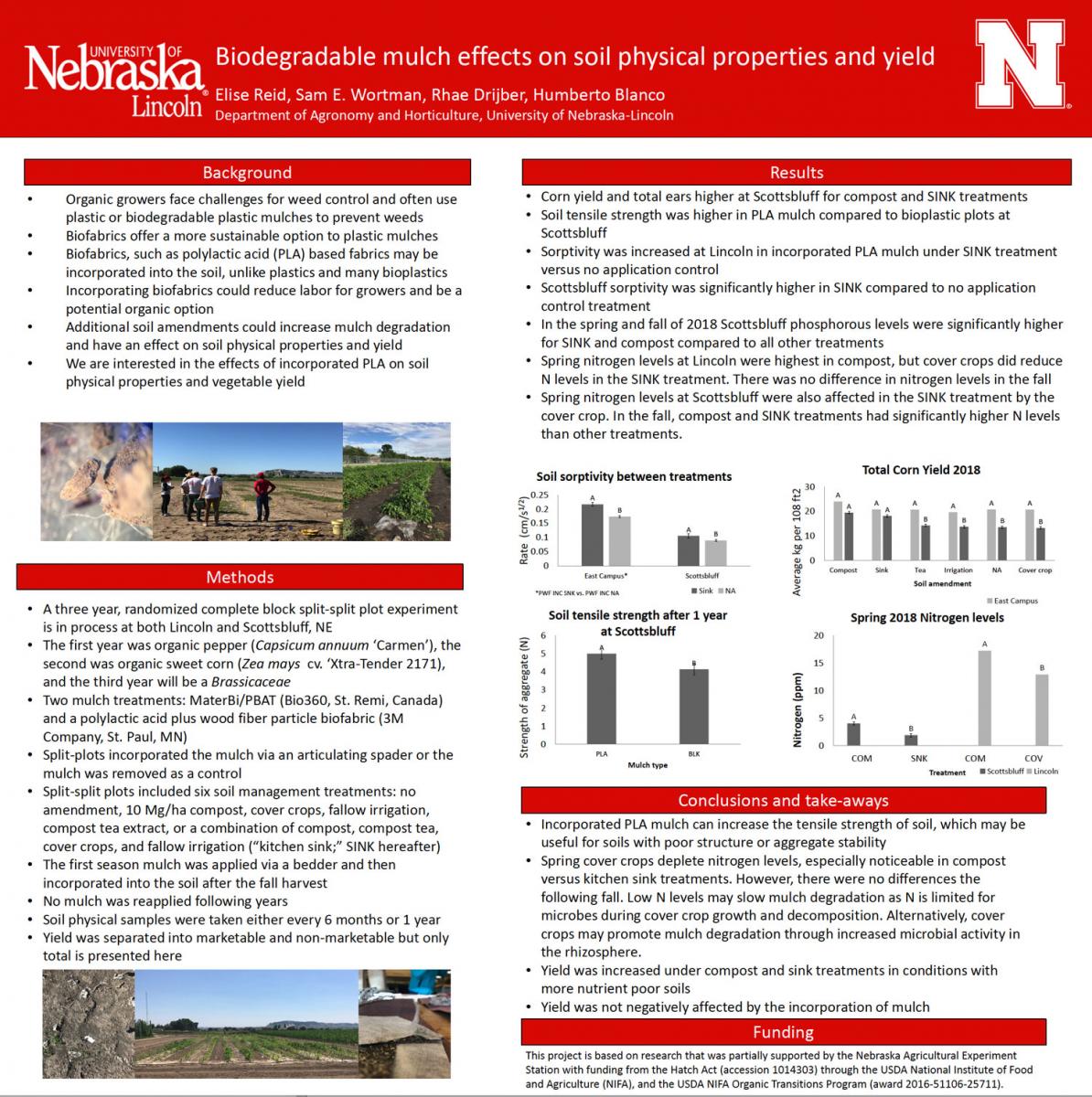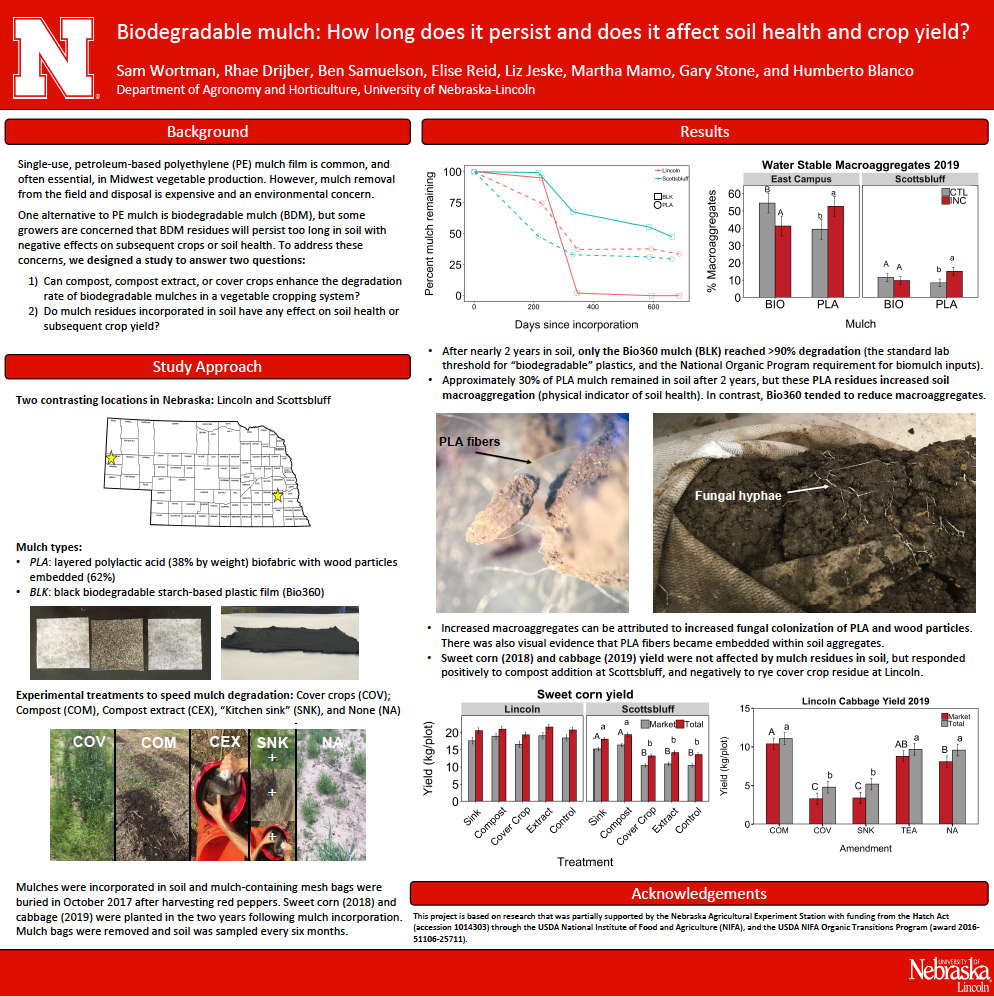Biomulch Recovery Methods
This video provides a review of available methods for measuring biodegradable mulch in soil over time. Project funding provided by U.S. Department of Agriculture National Institute of Food and Agriculture (USDA NIFA) Organic Transitions Program (ORG) Award # 2016-51106-25711.
Biomulch Incubation
This video shows the methods for measuring respiration produced in soil microcosms with various biodegradable mulches. Project funding provided by U.S. Department of Agriculture National Institute of Food and Agriculture (USDA NIFA) Organic Transitions Program (ORG) Award # 2016-51106-25711.
Biodegradable mulches, also known as biomulches, are increasingly popular among vegetable farmers due to concerns about the negative environmental impact of plastic mulch use and disposal. We are partnering with 3M Company to evaluate bio-based fabric mulches that provide season-long weed suppression, conserve soil moisture, and can be left in the field and incorporated into soil at the end of the growing season.
Our research goal is to identify post-incorporation management strategies that accelerate biomulch degradation in soil, and to determine the microbial drivers of biomulch degradation and the eventual fate of biomulch residues in the soil environment.
Research Updates

Managing Biodegradable Mulch Films: Lessons from the Lab, Greenhouse, and Field – Download PDF

Biodegradable mulch effects on soil physical properties and yield – Download PDF

Biodegradable mulch: How long does it persist and does it affect soil health and crop yield? – Download PDF
Funding Sources
- North Central Region SARE Graduate Student Grant Program (PI, Ben Samuelson)
- USDA NIFA Organic Transitions Program (award #2016-51106-25711)
Related Publications
- Madrid, B., S.E. Wortman, D. Hayes, J. DeBruyn, C. Miles, M. Flury, T. Marsh, S. Galinato, K. Englund, S. Agehara, and L. Wasko DeVetter. 2022. End-of-Life Management Options for Agricultural Mulch Films in the United States. A review. Frontiers in Sustainable Food Systems. https://doi.org/10.3389/fsufs.2022.921496
- Reid, E.V., M.B. Samuelson, H. Blanco-Canqui, R. Drijber, I. Kadoma, and S.E. Wortman. 2022. Biodegradable and biobased mulch residues had limited impacts on soil properties but reduced yield of the following crop in a low fertility soil. Renewable Agriculture and Food Systems 1-14. https://doi.org/10.1017/S1742170522000217
- Wortman S.E., Jeske, E., M.B. Samuelson, and R. Drijber. 2021. A new method for detecting micro-fragments of biodegradable mulch films containing poly(butylene adipate-co-terephthalate) (PBAT) in soil. Journal of Environmental Quality pp. 1-6. https://doi.org/10.1002/jeq2.20311
- Samuelson, M.B., E.V. Reid, R. Drijber, E. Jeske, H. Blanco, M. Mamo, I. Kadoma, and S.E. Wortman. 2021. Effects of compost, cover crops, and local conditions on degradation of two agricultural mulches in soil. Renewable Agriculture and Food Systems pp. 1-14. https://doi.org/10.1017/S1742170521000405
- Thompson, A. A., M. B. Samuelson, I. Kadoma, E. Soto-Cantu, R. Drijber, and S. E. Wortman. 2019. Degradation rate of bio-based agricultural mulch is influenced by mulch composition and biostimulant application. Journal of Polymers and the Environment pp. 1-12.
- Wortman, S. E., I. Kadoma, and M. D. Crandall. 2016. Biodegradable plastic and fabric mulch performance in field and high tunnel cucumber production. HortTechnology 26:148-155.
- Wortman, S. E., I. Kadoma, and M. D. Crandall. 2015. Assessing the potential for spunbond, nonwoven biodegradable fabric as mulches for tomato and pepper crops. Scientia Horticulturae 193:209-217.

Bio-based mulches in tomato.
